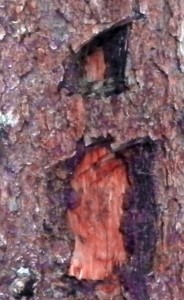 Are your trails marked for your guests to easily follow? Are the construction materials easy to maintain?
Are your trails marked for your guests to easily follow? Are the construction materials easy to maintain?
Many years ago, it was common practice to blaze trails by cutting into the inner bark, permanently scarring the tree (shown on left). This practice is not commonly used today.
Instead a variety of materials are used, including plastic, wood, metal, and paint. Below are some examples.
Best practices for a trail marking system
- The marker design focuses on the health of the tree, with little to no damage. YMCA Camp Chingachgook leaves the nails protruding to allow for tree growth (see below).
- Each trail is differentiable from other trails using colors, shapes, names, etc.
- The markers are well maintained. Also construction materials used require only minimal maintenance.
- The types of markers are consistent throughout the property.
- The markers are current in style and color. (e.g., avoiding that 1960s look, but still keeping historical relevance).
- The organization’s branding, logo, and overall look/feel is reflected in the trail marker.
Below are a variety of images – some are better examples and some examples are less preferred.
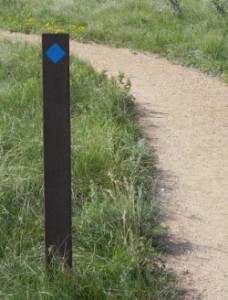
Plastic, with blue tape
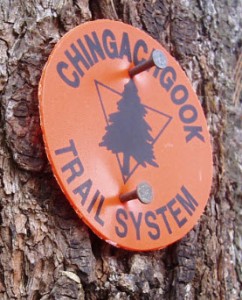
Plastic. Used with permission.
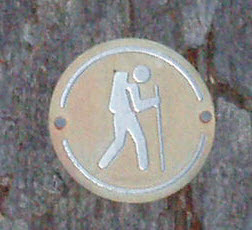
Metal, hiker symbol
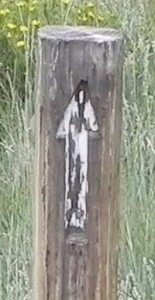
Wooden post, etched arrow
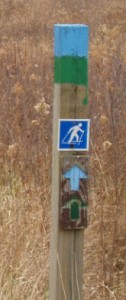
Wooden post, grassland trail

Painted metal
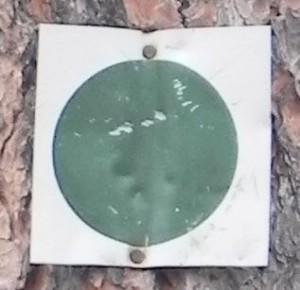
Painted metal
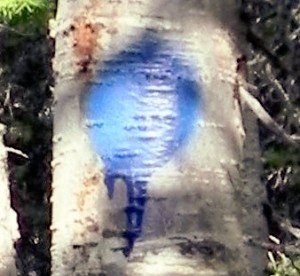
Spray paint
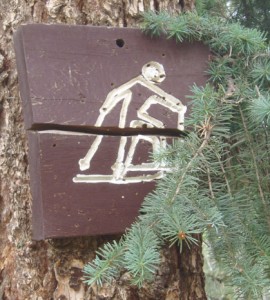
Wooden, engraved skier
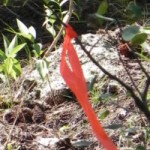
Plastic surveyor’s tape
